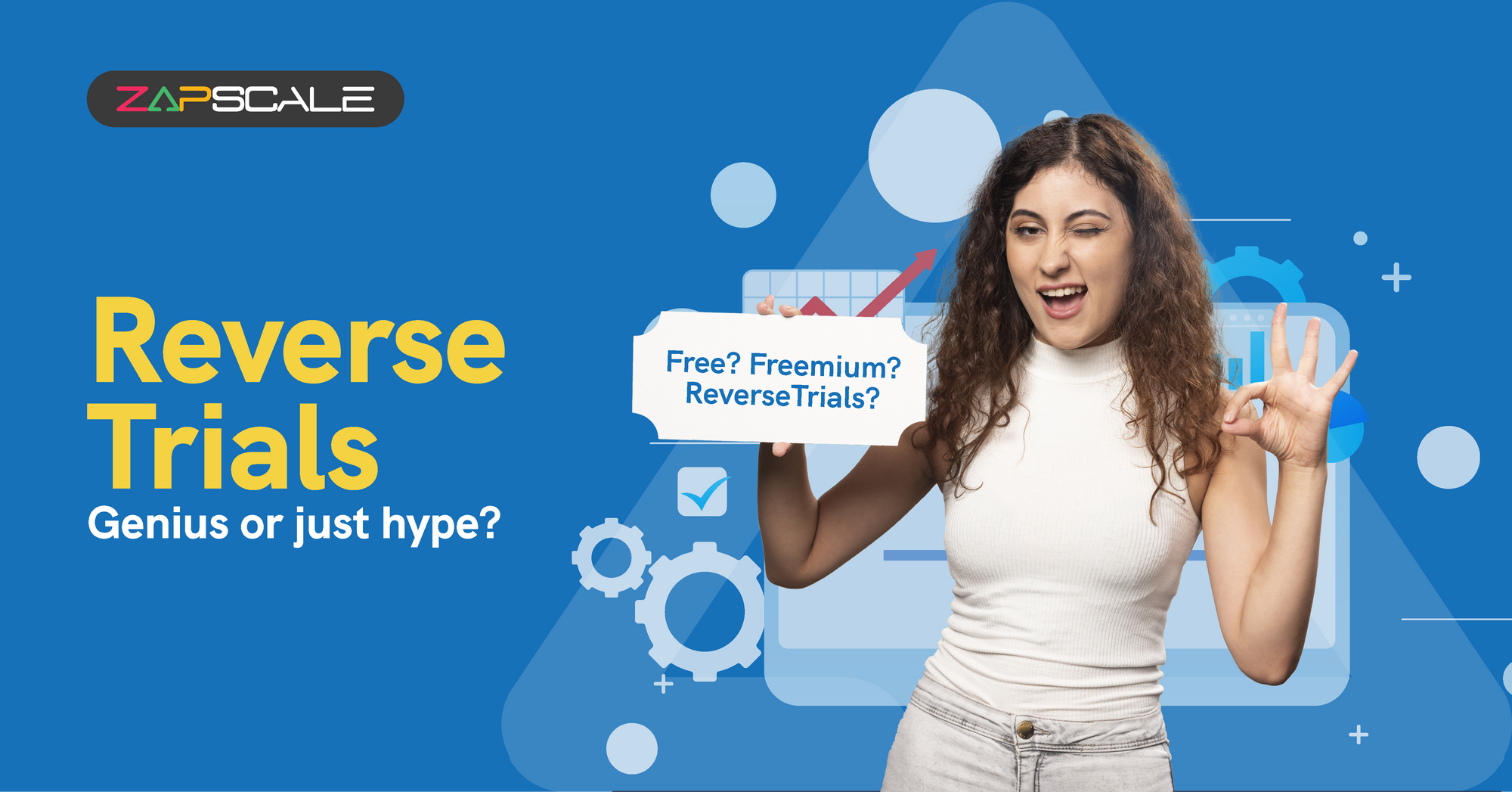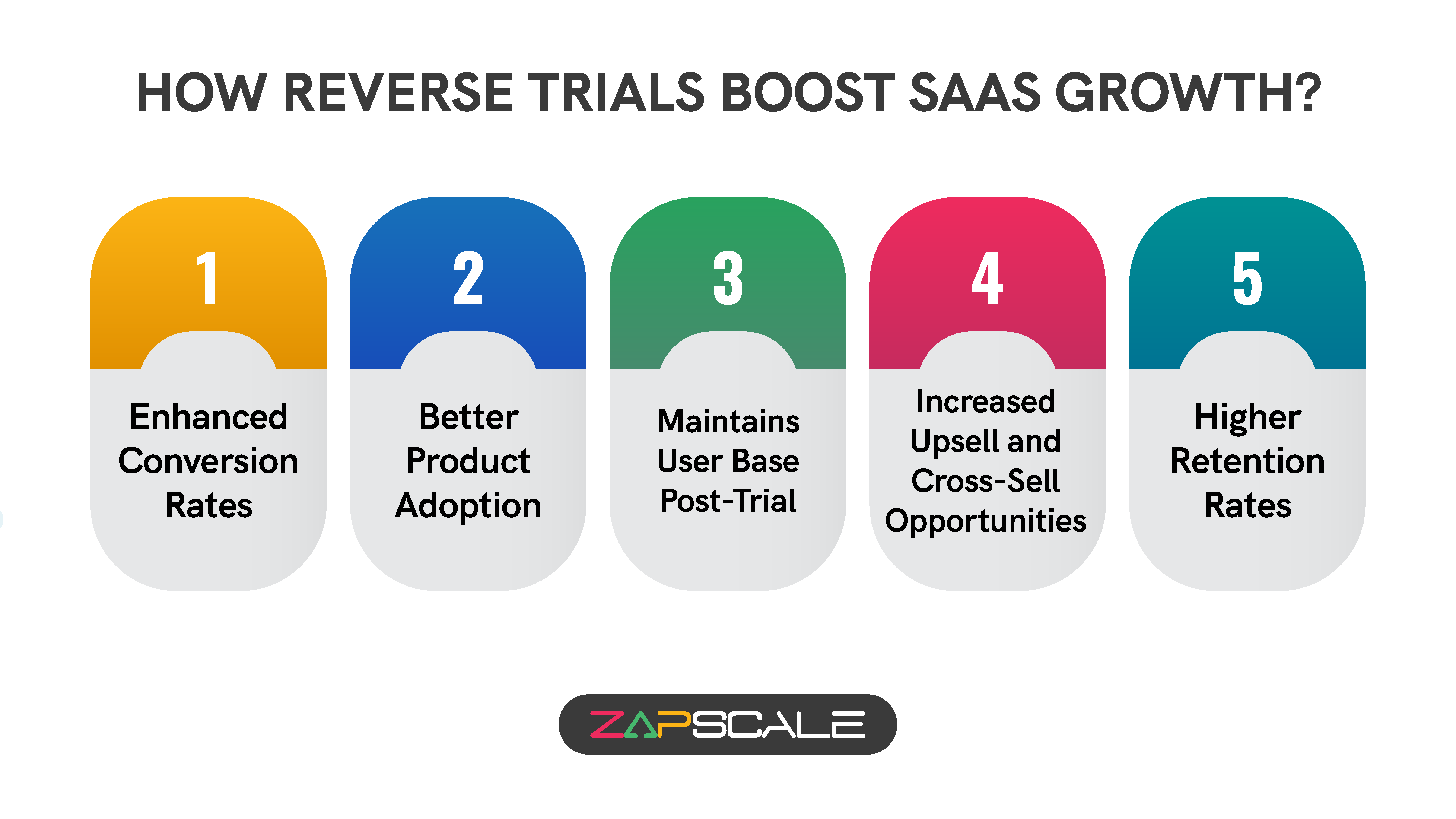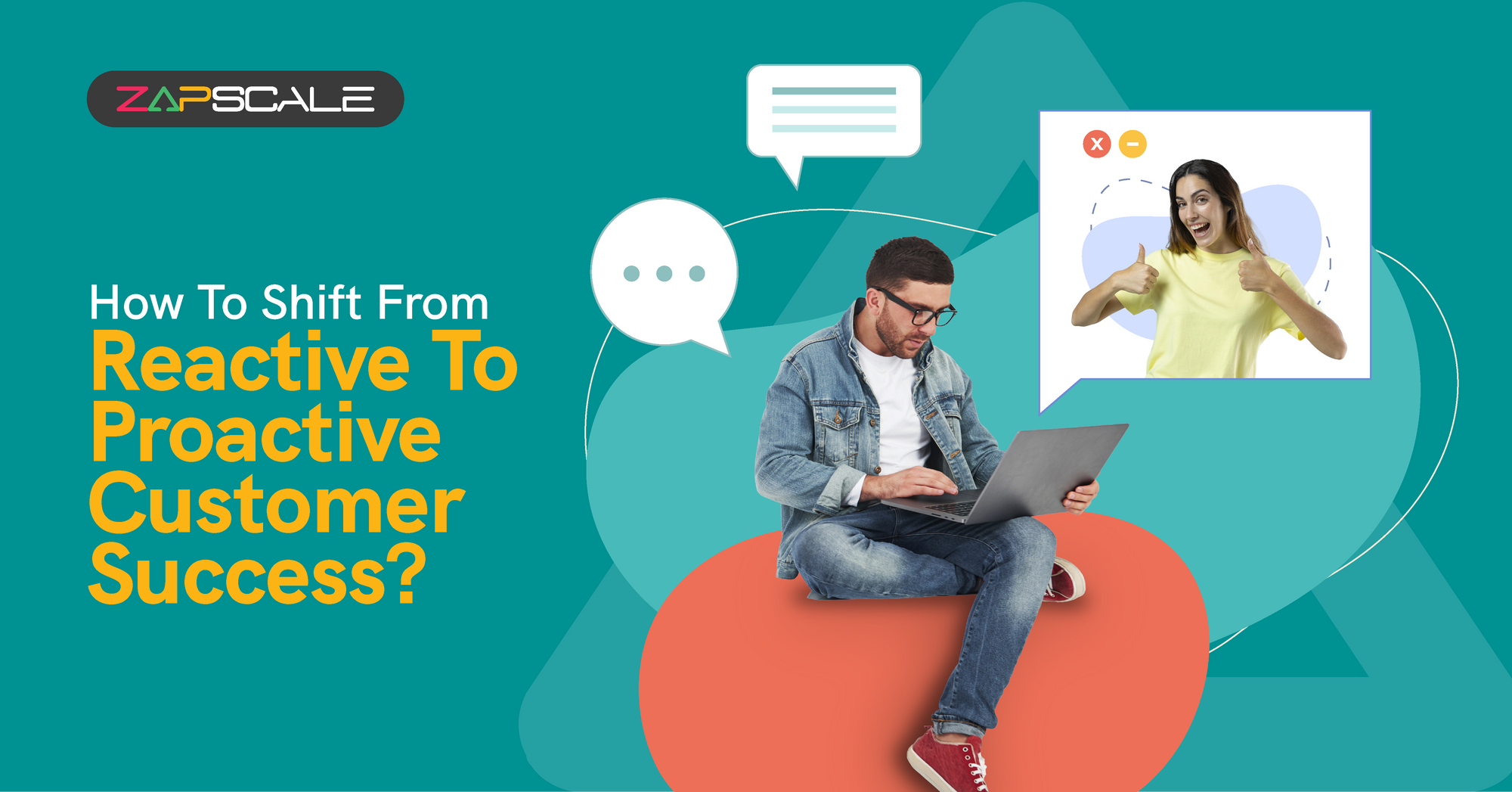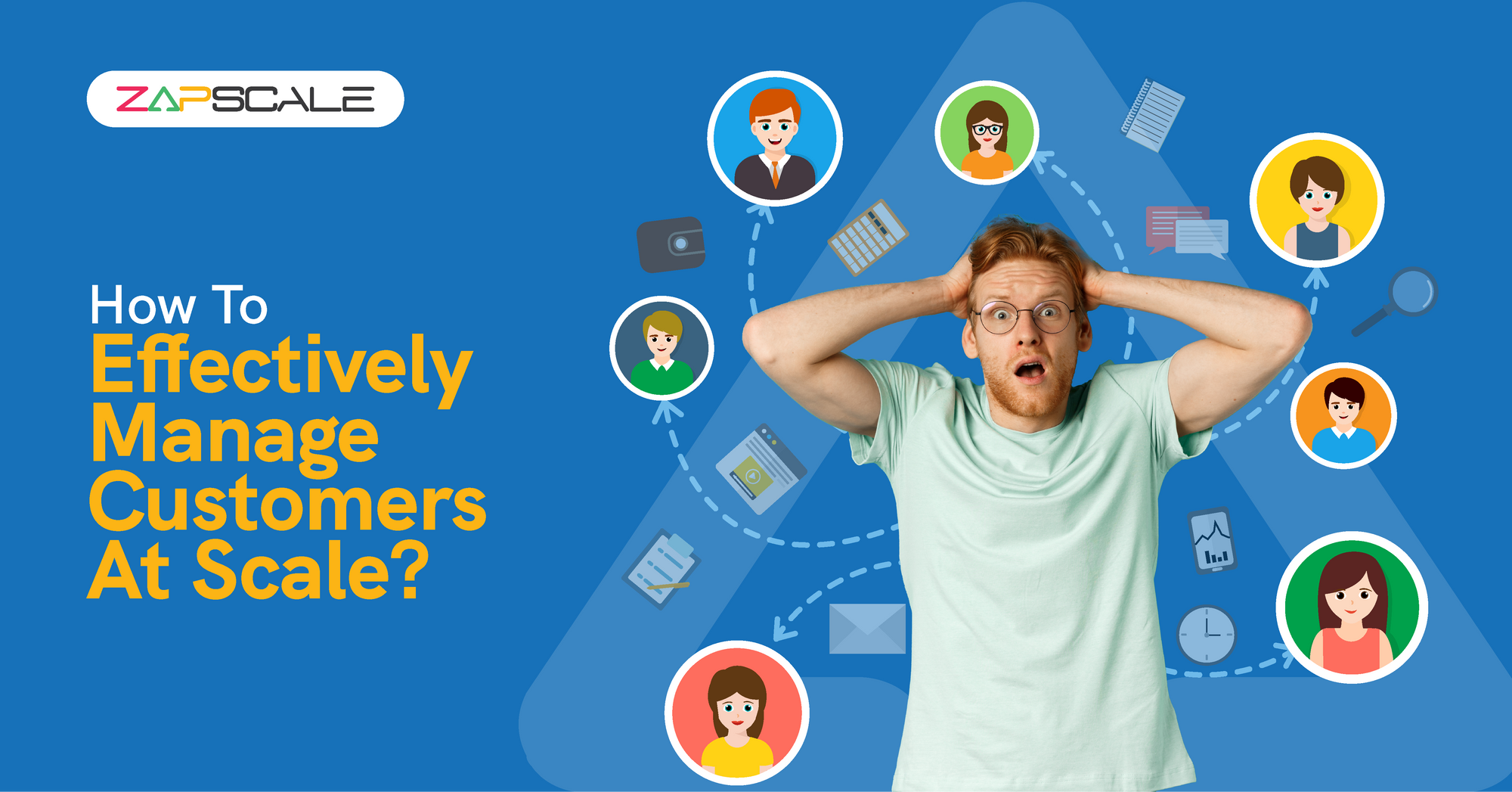CATEGORY > Customer Success Management
The Reverse Trial Method: Unlock SaaS Conversions Like Never Before!

In a world of growing SaaS companies and customers, getting that competitive edge has become non-negotiable. That’s why most SaaS brands are coming up with unique strategies to go the extra mile.
Out of all strategies, the reverse trial method is gaining immense momentum. Let’s explore everything there’s to know about this extraordinary model.
Reverse Trial In SaaS: A Quick Overview
A reverse trial in SaaS combines free trials with freemium plans.
With a SaaS reverse trial, users have full access to premium features for 14-30 days at no cost. After the trial period, users are reduced to a free plan with limited features. This allows users to fully realize the product's potential before committing.
Reverse trials are ideal for feature-rich SaaS products, boosting customer engagement and conversions. Companies like Toggl and Calendly have found success with this model, which drives engagement and product-led growth.

Why The Reverse Trial Model Is Worth Trying?
In a reverse trial model, users can get the benefits of both freemium and free trial frameworks. Customers gain full access to premium services for a limited time without providing any payment information. As soon as the trial ends, customers are switched to a freemium plan with basic features, which encourages deeper engagement and increases conversion rates.
This concept works well for rich products with multiple features, allowing users to see the complete product value before payment. Reverse trials encourage people to upgrade by eliminating upfront payment obstacles and increasing urgency when switching to the freemium plan. It promotes long-term engagement, enhances conversions, and builds confidence in customers.
The Best Trial For SaaS: Free, Freemium, Or Reverse?
As we all know, the free trial model offers full access to features for a limited time, aiming for quick conversions. On the other hand, the freemium model gives basic features for free eternally, with premium or paid upgrades available.
Now, coming to the reverse trial method begins with full access to premium features and then downgrades customers to a freemium plan after the trial period, combining the benefits of both models to increase customer engagement and conversions.
To decide which model works great for your SaaS company, take a look at the comparison below.
1. Access To Product Features
- Free Trial: Complete access for a limited period. (e.g., 7–30 days).
- Freemium: Limited access to core features, premium features available only through paid upgrades.
- Reverse Trial: Full access initially, downgrades to freemium after the trial is over.
2. Time Limit
- Free Trial: Time-limited (14–30 days).
- Freemium: No time limit as the free version continues forever.
- Reverse Trial: Full access is only available for a limited time before being reduced to freemium status.
3. Payment Requirement
- Free Trial: Requires upfront payment information.
- Freemium: No payment is required but some freemium models might ask for details.
- Reverse Trial: No upfront payment; payment is required after the trial ends to retain full access.
4. Customer Experience
- Free Trial: Good for ready-to-pay customers, but could repel uncertain users.
- Freemium: Extended experience, but limited value without an upgrade.
- Reverse Trial: Transparent, low-risk, and establishes trust before requesting payment.
5. Upselling Opportunities
- Free Trial: Strong upselling, however, users may drop off after the trial period.
- Freemium: Continuous upselling, but with decreasing conversion rates.
- Reverse Trial: Strong upselling, as customers realize the value of premium features.
6. Compatibility
- Free Trial: Products with prompt value demonstrations.
- Freemium: Large user base, long-term conversion.
- Reverse Trial: Feature-rich products needing maximum exposure for increased conversions.
How Reverse Trials Help Your SaaS Cut Through The Noise?
Reverse SaaS trials are gaining immense popularity by allowing new-age brands to shine and receive customer loyalty like never before.
Let’s discover what benefits are in store for you after implementing the reverse trial method.

1. Enhanced Conversion Rates
Reverse trials frequently outperform freemium models in terms of conversion. Users who have had a full experience with the product are more likely to recognize its value. As per research, free-to-paid conversions for trial models are 2-3 times greater, making reverse trials more effective in converting users into paying customers.
2. Better Product Adoption
Offering complete product access encourages users to become more active and engaged. This increased level of involvement boosts adoption rates by helping users comprehend the product's value and potential.
3. Maintains User Base Post-Trial
Unlike standard free trials, where users frequently quit, reverse trials retain users by lowering them to the freemium plan, making room for continual nurturing and future upgrades.
4. Increased Upsell And Cross-Sell Opportunities
Once users are familiar with all of the product's capabilities, SaaS companies can effortlessly upsell and cross-sell, increasing revenue and customer lifetime value.
5. Higher Retention Rates
Exposure to the entire product increases user investment, which improves retention. As their requirements evolve eventually, they are more likely to upgrade to a paid plan.
Top Examples With Big Results
Many SaaS companies have successfully leveraged the power of reverse trial methods and are thriving today! Let’s uncover a few of those names by reading further.
1. Calendly
Calendly's premium "Teams" plan includes a 14-day reverse trial that does not require a credit card. Users are degraded to the free version after the trial period. The product’s approach of providing value without immediate payment has helped it attract millions of customers and businesses throughout the world.
2. Grammarly
This renowned grammar and spell checker offers a 7-day reverse trial that includes full access to its premium features. Users are automatically relegated to the free version once the trial period expires. The incorporation of premium features into daily writing chores encourages users to upgrade since they feel a feeling of loss after receiving the premium perks.
3. Canva
Canva's 30-day reverse trial includes full access to premium tools and content. When the trial period expires, users are shifted to the free plan, instilling a sense of loss that motivates upgrades to paid plans for continuous access to advanced features.
4. Asana
Asana offers a 30-day reverse trial that includes full access to premium features. After the trial period expires, customers are reduced to the free version, which motivates them to upgrade once they see the value of premium tools for team collaboration.
5. Wix
Wix provides a 14-day reverse trial with full access to premium features. Following the trial, users are back to the free plan with fewer features, encouraging them to purchase as their website-building requirements increase.
Why Reverse Trials Sometimes Fall Flat?
A reverse trial may not be appropriate for every SaaS product. If your product is difficult to learn, users may not completely realize its benefits after a brief trial. Furthermore, if customers do not want premium services regularly, they may choose to remain on the freemium plan rather than upgrade.
Free trials are highly recommended for SaaS products that require extensive support or onboarding. Before doing a reverse trial, ensure that your paid plans provide clear value and that people can easily perceive the benefits of upgrading.
To cut it short, with a reverse trial method, your customers get the best of both worlds. By enabling users to experience premium features upfront, SaaS companies can ensure guaranteed upgrades and long-term customer relationships.
FAQs
1. What is a reverse trial method in SaaS?
Reverse trial methods allow SaaS users to try premium services for a limited time without any payment. After the trial period, customers are sent to a freemium plan with fewer functions.
2. What does the term "reverse trial" mean?
A reverse trial means that customers begin with full access to premium features and are subsequently reduced to a free plan at the end of the trial unless they opt to pay for a premium plan.
3. What is a reverse freemium strategy?
In a reverse freemium strategy, customers start with full access to premium services but are sent back to a free plan post-trial period, unless they choose to upgrade to a paid version.
4. When do reverse trials fail in SaaS?
Reverse trials are ineffective for products that are difficult to learn, rarely used, or require extensive assistance. In many circumstances, customers may not find a compelling reason to upgrade due to product complexity.
ABOUT THE AUTHOR
Sonali is a social media enthusiast and creative content writer with 3+ years of experience. With a passion for storytelling, Sonali delivers content that inspires, informs, and captivate readers.
Popular from Customer Success Management
Quality Content,
Straight To Your Inbox!
Subscribe for the latest blogs, podcasts, webinars, and events!

Write a Blog
If you have experience in CS and
a flair for writing, we’d love to
feature you.
Write to us on
hello@zapscale.com



